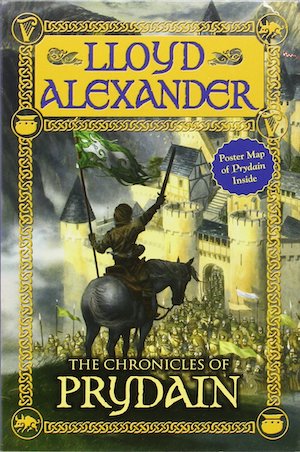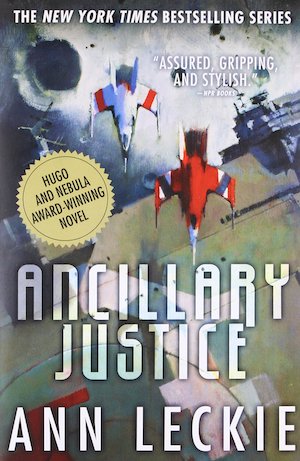Put it in pictures —
The Ars staff picks the novels we think would make compelling TV adaptations.
Ars Staff
–

Enlarge / Vancouver Public Central Library. Libraries are where books sleep when you’re not reading them.
The past few years have seen an explosion in high-concept, high-budget adaptations for premium TV and streaming services, like The Expanse and Game of Thrones. Following in the footsteps of antecedents going back to the miniseries based on Roots, they’ve tackled material that’s too intricate and too sprawling to possibly squeeze into a movie-length work. At their best, these adaptations have done justice to the most challenging material.
All of which has left the Ars staff wanting more. If producers and networks are willing to put that much love into works we either weren’t familiar with or weren’t in love with, what might they manage with some really good material?
What started as a watercooler chitchat morphed into an article and has now blossomed into a series of short pleas/pitches—Hollywood, we’re all easy to reach. And we’re giving you, the reader, the chance to tell us how wrong we are or to come up with some suggestions of your own.
The Chronicles of Prydain (1964-1968) by Lloyd Alexander
This series, a loose retelling of stories from Welsh mythology, was absolutely formative for me and for countless other children in generations both preceding and following mine. Given how big fantasy has gotten since the turn of (this) century—and how many tween- and teen-friendly books have hit the big screen—I’m frankly shocked that nobody in the modern “prestige TV” era has taken a run at this childhood classic yet.
A young man, bored out of his head as an assistant pig-keeper, dreams of glory—despite all his elders’ warnings that “glory” really isn’t everything it’s cracked up to be. One day, the pig in his care—who turns out to have a distinctly unusual skill set for a swine—escapes, and he chases her directly into the adventure of a lifetime.

Our hero, Taran, is immediately surrounded by a cast of characters who are both archetype and individual all in one. First he meets an old veteran prince, Gwydion, followed in short order by Gurgi, a woodland denizen who defies categorization. Later, he and we meet with Fflewddur Fflam, a bard who means well but has some trouble with the truth; Eilonwy, a self-rescuing princess who drags Taran along for her liberation; and Doli, a dwarf and member of the fair folk, among others.
The books follow Taran not only as he moves through events in the world, fighting a Manichean battle against the god of Death and his lieutenants, but also as he moves through the path to adulthood, learning that the world itself is in fact not so black-and-white as he once imagined. He finds in the end that the seeking must count more than the finding and the striving more than the gain; that you cannot judge the secret heart of another, where good and evil mix, but must instead judge someone by their deeds.
It is, in short, a powerful coming-of-age tale that also has some absolutely killer action sequences lurking in it along the way, teaching all the moral lessons of a Game of Thrones with a tiny fraction of the violence and 10 times as much compassion. The series is tied together by a genuinely bittersweet ending that earns its triumphs without being cloying and its losses without leaning in to nihilism.
From a business end, it also has five full books’ worth of stories, told episodically, with room for more spinning of stories around the edge—the perfect competition to all those young-adult trilogies that get adapted into films, or Warner Media’s unending and seemingly unkillable Harry Potter juggernaut.
Variety reported in 2016 that Disney had snapped up the rights to make a film-series adaptation—a decidedly mixed blessing, considering Disney was also behind the fairly execrable and utterly forgettable 1983 animated adaptation. But in five years, that project appears to have gone exactly nowhere. Why not hand it over to someone else—even the Disney+ streaming service, which has churned out phenomenal original TV—to take another try?
—Kate Cox, Tech Policy Reporter
Ancillary Justice (2013-2015) by Ann Leckie
I would love to see Ann Leckie’s Ancillary Justice series done for television—and done right. In Ancillary Justice, an incredibly powerful AI named Breq—designed to control a massive starship, along with an entire army of mind-wiped human bodies called Ancillaries—has become greatly diminished. With its ship destroyed, the AI has only a single human Ancillary body available for use—and only the processing power of that single human brain to think with.

Although reduced, Breq is still a force to be reckoned with—the Ancillary body, which once belonged to a human, was rebuilt from the ground up to serve as a superhumanly strong and fast high-tech soldier. But its enemy is Anaander Mianaai, the ruler of an entire civilization—and, Mianaai is not limited to a single body, having created hundreds of clones that have been melded into a disturbed hive mind.
The quest to get revenge on Mianaai necessarily leads Breq through a rich pageantry of “barbarian” civilizations and aliens, as well as Breq’s and Mianaai’s own Radchaai Empire—the cultural differences between the Radch and the “barbarians” made the original novels one of the most initially frustrating but ultimately rewarding reads I’ve ever experienced. The “barbarians” are basically what most readers would consider normal cultures, while the Radchaai are technologically and culturally transcendent enough to come across as alien to most.
In particular, the Radchaai find gender nearly irrelevant in any context outside reproduction. Their bodies are generally heavily modified both cosmetically and functionally for strength, speed, and long life. They use gender-neutral pronouns, and their fashions do not discriminate between male and female—so it’s not obvious what gender an individual Radch is in the first place. This outlook colors their encounters with foreign cultures, leaving them puzzled by the boorish and irrelevant (to them) focus that barbarians have on gendering everything.
A typical reader of the books will be massively frustrated by this at first, flipping pages back and forth trying to catch some hint as to whether each character is male or female, despite the Radchaai (and nonhuman) narrator’s obliviousness. Eventually, the worldview clicks and the reader, like the narrator, simply stops caring. While a television show wouldn’t be able to recreate the Radchaai’s indifference towards the gender of “barbarians,” it should be able to cast thoroughly androgynous actors for the Radchaai themselves.
Besides, I’d like to see a competitor in distant-future, altered-clone, body-independent weirdness to Netflix’s outstanding Altered Carbon.
—Jim Salter, Technology Reporter

